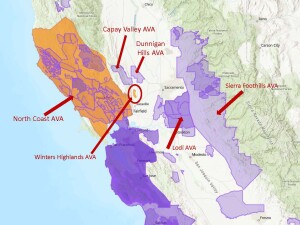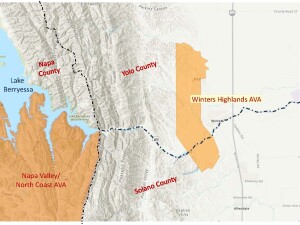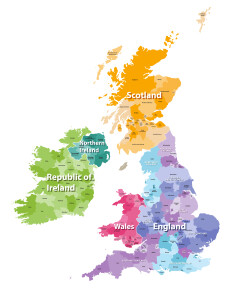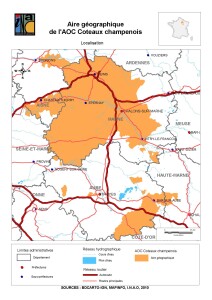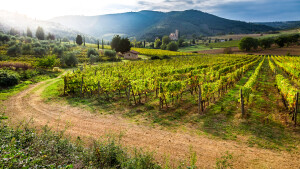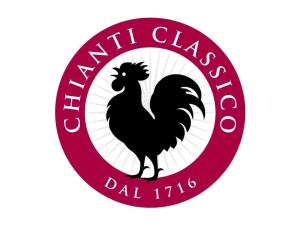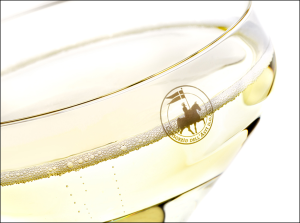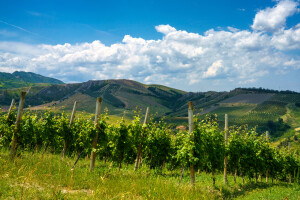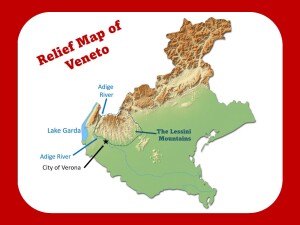
Base map via the TTB AVA Explorer (click to enlarge)
On July 5 (2023), the TTB (Alcohol and Tobacco Tax and Trade Bureau) of the United States announced the approval of the Long Valley-Lake County American Viticultural Area (AVA). The new AVA is located entirely within Lake County (California).
It should be noted that at the same time as this ruling, the TTB expanded the area of the already-established High Valley AVA to create a solid boundary between the two appellations. In addition, the area of the larger, previously established North Coast AVA was expanded in order to encompass the entirety of the Long Valley-Lake County AVA, making the new AVA entirely contained within the North Coast AVA.
According to the original petition—drafted by Terry Dereniuk (owner of Terry Dereniuk Consulting), Don Van Pelt (of Cache Creek Vineyards), and Clay Shannon (of the Shannon Family of Wines) on behalf of Long Valley wine grape growers and originally submitted in 2018—the distinguishing features of the Long Valley-Lake County AVA include its topography (elevation), geology (soil), and climate—as described below.
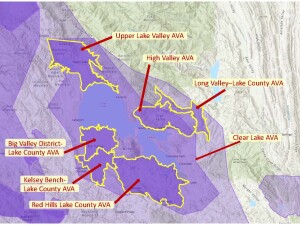
Base map via the TTB AVA Explorer (click to enlarge)
Topography and elevation: The area inside the Long Valley-Lake County AVA consists of a long, narrow valley floor—situated at a medium elevation of 1,322 feet/403 m above sea level—surrounded by the hills of the High Valley Ridge and the Rocky Ridge. Long Valley Creek runs along the valley floor. The foothills and benchlands within the AVA rise an additional 200 feet/61 m to 500 feet/152 m above the valley floor. During the growing season, cool air blowing down from the hills helps to cool the vines from the heat of the day and allows some protection from early spring frosts. Elevation differentiates the Long Valley-Lake County AVA from the surrounding areas (such the High Valley and Red Hills AVA); these areas have higher elevations and steeper hillsides.
Geology (soil): The Long Valley–Lake County AVA sits atop the Cache Formation—an area of fossilized deposits left over from the Jurassic Period, when Lake County was covered by water. The Cache Formation—which forms basis of the area’s soils—consists mainly of freshwater lake deposits, volcanic rock, tuff (lithified volcanic ash), limestone, sand, and gravel. In many areas, these soils rest atop blue clay, limestone, and shale.
Climate: The climate of the Long Valley-Lake County AVA differs from the climate of the surrounding areas in terms of annual rainfall as well as heat accumulation (growing degree days) during the growing season. Rainfall in Long Valley averages between 27 and 33 inches per year, with the larger numbers typically experienced in the western edge of the area. These numbers are higher than those typically experienced in the areas to the south and east of the appellation, and quite a bit lower than those experienced to the northwest (where rainfall can average up to 45 inches per year).
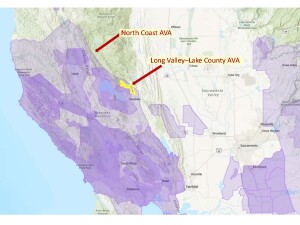
Base map via the TTB AVA Explorer (click to enlarge)
According to the petition, the Long Valley-Lake County AVA is classified as Region III on the Winkler scale and is (on average) a bit cooler than the surrounding areas. In terms of average growing degree days (GDD), the Long Valley-Lake County AVA has an average heat accumulation of 3,378. Of the surrounding areas, the High Valley AVA averages 3,548 GDD, while the Red Hills-Lake County AVA averages 3,595.
The new appellation covers a total of 7,605 acres, of which approximately 149 acres are currently planted with commercial vineyards; Cabernet Sauvignon, Cabernet Franc, Petite Sirah, and Syrah are the leading grape varieties. There are currently three wineries located within the new AVA, including Noggle Vineyards and Winery, Cache Creek Vineyards and Winery, and Stonehouse Cellars.
When the Long Valley-Lake County AVA is brought into force—on August 4, 2023—the total number of AVAs in the United States will be 268; of these, 148 will be in California.
Welcome to the world, Long Valley-Lake County AVA!
References/for more information:
Post authored by Jane A. Nickles…your blog administrator: jnickles@societyofwineeducators.org
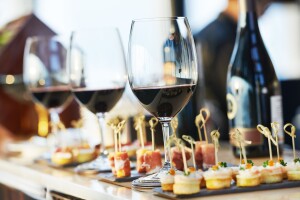 Tucked in between Bordeaux’s two famous rivers—the Dordogne and the Garonne—Entre-deux-Mers has been a white-wine-only appellation since its inception in 1937.
Tucked in between Bordeaux’s two famous rivers—the Dordogne and the Garonne—Entre-deux-Mers has been a white-wine-only appellation since its inception in 1937.